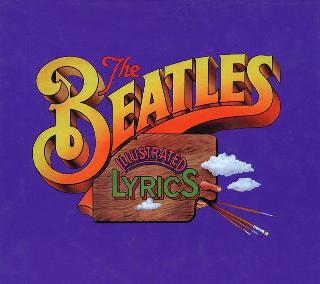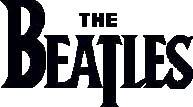Index
Home
Vorige
I'm Looking Through You
Composer(s) : Lennon and McCartney
Year : 1966
Chords/Tabs: I'm Looking Through You
Notes on "I'm Looking Through You" (ILTY)
KEY A-flat Major (strange, huh !?)
METER 4/4
FORM Intro -> Verse -> Verse -> Bridge ->
Verse -> Bridge -> Verse -> Outro (fadeout)
GENERAL POINTS OF INTEREST
Style and Form
- We've got yet another fine example here of the Beatles' own unique
folk/rock style; this one jazzed up a bit by a faintest touch of the
blues.
- Kinetic energy abounds from more than just the beat. For one thing, Paul
scans the lyrics in a manner that is inconsistently off-center from the
otherwise four-square phrasing of the music; an effect more pleasing than
it would sound from my verbal description of it :-).
- But even more so, the phraseology of both verse and bridge features a
rhetoric suggestive of cumulatively established momentum. The image comes
to mind of "run&jump, now return to the starting point you so you may
run&jump again, only this time much farther." Resonance between the latter
strictly musical phenomenon and any corellative emotional or passionate
experience of yours are guaranteed to raise a smile.
- The form, for a change, is the very standard model with two bridge and
only one verse intervening.
Melody and Harmony
- A-flat Major is an unusual key choice for the Beatles. It works
out nicely in terms of the track sequencing on the album; making
a smooth inbound transition from the 3-flat key signature of
"Girl",
and setting up a pace-setting outbound shift of a half-step upward
to the A (natural) Major key of
"In My Life." Nevertheless, I'd
be surprised if Paul originally conceived of the song in this key,
and rather suspect that it was composed in the 'easier' key of G
and adjusted upward, perhaps by capo, in the studio.
- Paul's typically generous application of expressive melodic
appoggiaturas helps liven up an otherwise straightforward set of
chord choices. Just the same, the tune remains essentially within
the diatonically pure realm of the Major mode. The only exceptions
are the bluesy minor 3rds used at the climax of each verse, and the
equally bluesy minor 7ths which appear in the little riffs that trail
those climaxes.
- The chord progressions are also relatively simple yet the song does
feature the same sophisticated tendency of the predominant Major key to
"wilt" downward into the relative minor that we've seen in before
"Yesterday" and elsewhere.
- "4->3" suspensions appear in both the verse and bridge and this provides
a source of subliminal unity within the song. The suspension in the
bridge is quite dramatic, coinciding with the big build up at the end
of the section ("... disappearing over night"). The verse suspensions
are tucked away more quietly and unfold more quickly at the end of each
of the first two phrases.
Arrangement
- Paul's lead vocal is double tracked the whole way through except for the
outro, where the switch over to single tracking adds a surprising last
minute sense of increased intimacy and immediacy. John joins in for
a relatively limited spot of backing on third phrase of each verse.
- The instrumental texture is dominated by the sound of acoustic guitar
and electric bass. In place of the usual drum kit, percussion sounds
in this song are limited to thigh slaps (or are they all hand claps ?)
and a tambourine. As is so typical of the Beatles, the tambourine part
is more carefully planned out in a pattern than you might ever notice
unless you pay careful attention to it as a listener; i.e. it is shaken
on the offbeats of the trailing ends of the verses, and during the bridges
and outro. It is *never* played during the four sung phrases of the verses
except for one stray shake in the midst of the third verse; surely that
must be a mistake.
- Lewisohn et al acknowledge perplexity over Ringo's being credited on
the album jacket with playing organ on this track as though there were
no such evidence of it to be heard. Nonsense -- the bluesy riffs
which trail each verse are clearly punctuated (one-two) by chords
played on an organ in the first two beats of the measure.
- The electric lead guitar in this song seems to play the role of a shy
lurker, commenting on the main action in a rather tentative, interjectory
way; it doesn't even play a single note until the midst of the second
verse! I am intruigued by the question of whether those fills at the
end of each verse involve the guitar at all or whether the licks
as well as the puyctuating chords are provided on the organ by Ringo.
- There is a 'recording anomoly' I've not yet seen on anyone elses
list in the double tracking of the first bridge, at the phrase "love
has a nasty etc." -- a nasty splice is what it sounds like to me.
SECTION-BY-SECTION WALKTHROUGH
Intro
- The instrumental intro features a staggered entrance of the players:
------ 3X -------
|A-flat |E-flat |A-flat D-flat |
A-flat: I6/4 V I IV
- The opening I-V chord progression has the I chord in the so-called
second, or '6/4' inversion. This particular usage, the textbooks
teach us, cause the listener to parse the first chord not so much
as a "I" chord per se, but more so as dual-appoggiatura embellishment
of the V chord to which it is adjoined. In slightly plainer terms,
this means you tend to hear this opening less as a full-fledged
I-to-V root progression, and more so as a V chord with simultaneous
6->5 and 4->3 suspensions placed upon it.
- Given the combination of the latter 'effect' with the relatively
widespread airplay given to 4->3 suspensions within the rest of the
song I wonder if, indeed, the infamous "false start" on the American
edition of the _Rubber Soul_ album was really a mistake or something
done intentionally, in order to, right at the outset, call attention
to itself.
Verse
- This verse provides a rare analytical conundrum; indeed, where is the
downbeat of each phrase located ? There are at least two ways of parsing
it, either one of which has pros and cons. I've opted, after *MUCH*
vacillation on the matter, to present it below as though the downbeat
is just before the first word of each line:
(rest)I'm Looking|through etc. ...
------------------------------ 2X ------------------------------
|A-flat D-flat |b-flat |f |E-flat |
A-flat: I IV ii7 vi V4 ----> 3
|f |b-flat |A-flat D-flat |E-flat |
vi ii6---->5 I IV V
|A-flat D-flat |b-flat |D-flat |A-flat D-flat |
I IV ii7 IV (w/flat 7!!) I IV
----- 2X -------
|A-flat D-flat |
I IV
- The above analytical perspective clearly outlines the poetical/metric
structure of the section as AABA'+ a vamping connector in the manner
of the intro, and it places the starting point of each phrase on
expectable harmonic footings. One "side effect" of this view (if you
really do hear it this way!) is the kind of meta-syncopation implied
toward the second measure of each phrase, the nature of which is awkward
albeit interesting. Another is the equally interesting/awkward elision
of the the last sung phrase with the connector.
- Alternatively, you can parse what I've called the first measure of
each phrase as a pickup, shifting the beginning of each phrase one
measure forward from how it is parsed above. This view "eliminates"
the meta-syncopation problem of the first view but it throws the
starting points of all phrases on unusual chord choices and makes
the elision of the last sung phrase feel even more awkward.
- The harmonic rhythm here is unusually flexible compared to what we've
seen of the Beatles in this department over the long run. In addition,
the deceptive cadence toward vi (the relative minor!) at the start of
the third phrase is treat and a fine example of monotony-avoidance.
- Every time the progression of I-IV-ii appears, Paul provides the
same bass lick which makes nice downward counterpoint to the melodic
rise which it accompanies. Once you know it's there it provides both
a subliminal hook to the song as well as something to "look forward
to"; analogous to some habitual move your lover makes, of which, you
somehow (somehow !! :-)) never grow tired:
words: I'm look- ing |through you |
tune: (rest) C D-flat F |A-flat F |
bassline: |A-flat D-flat C |B-flat |
|A-flat D-flat |b-flat |
I IV ii
- The 'A' phrase of the tune has a pleasing arch shape which would chafe
eventually were it not for the master stroke with which it finally breaks
through the glass ceiling in the final phrase; break on through to the
other side, so to speak.
Bridge
- The bridge in this case provides typical contrast, if for no other
reason, by virtue of its straightforward phraseology of 4+4, AA':
|D-flat |- |A-flat |- |
IV I
|D-flat |- |E-flat |-
IV V4 -------------3
- Other sources of contrast include the off-center harmonic emphasis
on IV, the slower steadier harmonic rhythm, and the Really Big Climax
on V.
Outro
- The outro is built atop the same I-IV vamping heard in both the intro
and trailing connector of the verse. Here it repeats forever into the
sunset with Macca now single tracked and getting a tad silly with the
words.
SOME FINAL THOUGHTS
- To our great fortune Take 1 of "I'm Looking Through You" is widely
available on bootleg. We've got reason to expect it to appear some
day in official release should the ill-fated _Sessions_ album ever
see the legitimate light of day, though even then, the unblended,
unedited, and unfaded version of this outtake which appeared on the
likes of "Ultra Rare Trax" will forever remain the one to seek out.
- As we saw with the Take 1 outtake of
"Norgweigan Wood", this early
version is instructive to the extent to which it both resembles *and*
differs from the so-called Official Release. You can tell right off
that this is no rough or tentative demo rehearsal from the fussy care
with which the arrangement is worked out, not to mention the precious
phoneme-level sound bites captured on the start/stop rough edge of the
source tape of Paul giving last minute directives to his mates.
- Amazingly, for all its differences, the first take is amazingly
similar to the official version in its vocal arragement. But what
of those other differences ?
- Superficially speaking, the tempo is slower, and the folsky feeling is
made even stronger by virtue of not only more hand claps and thigh slaps,
but also (of all things) the inclusion of *maracas*!!
- More substantively speaking, the first version features something which,
in comparison with the most effective bridge of the official version, falls
a bit flat on its face: a 12-bar frame for the interjectory lead guitar
which otherwise does not appear anywhere else in the first take, coupled
to a reprise of the last half of the verse.
- I'll close with the following two observations which fall along the
spectrum somewhere in between the truly minute and the big-picture
variations: a) The first take does not feature the decending bass riff
in the verses; but b) it *is*, by the way, in the key of G!
Regards,
Alan (awp@world.std.com)
---
"You wear L'air Du Temps ** ..." 072593#85
** a pint at Christophers to whomever figures out the connection
to Our Song of this very vague filmic reference ! :-)
---
Copyright (c) 1993 by Alan W. Pollack
All Rights Reserved
This article may be reproduced, retransmitted, redistributed and
otherwise propagated at will, provided that this notice remains
intact and in place.
Ook op Rubber Soul:
(c) 2024 Serge Girard


 (c) Alan Aldrigde, The Beatles Illustrated Lyrics
(c) Alan Aldrigde, The Beatles Illustrated Lyrics